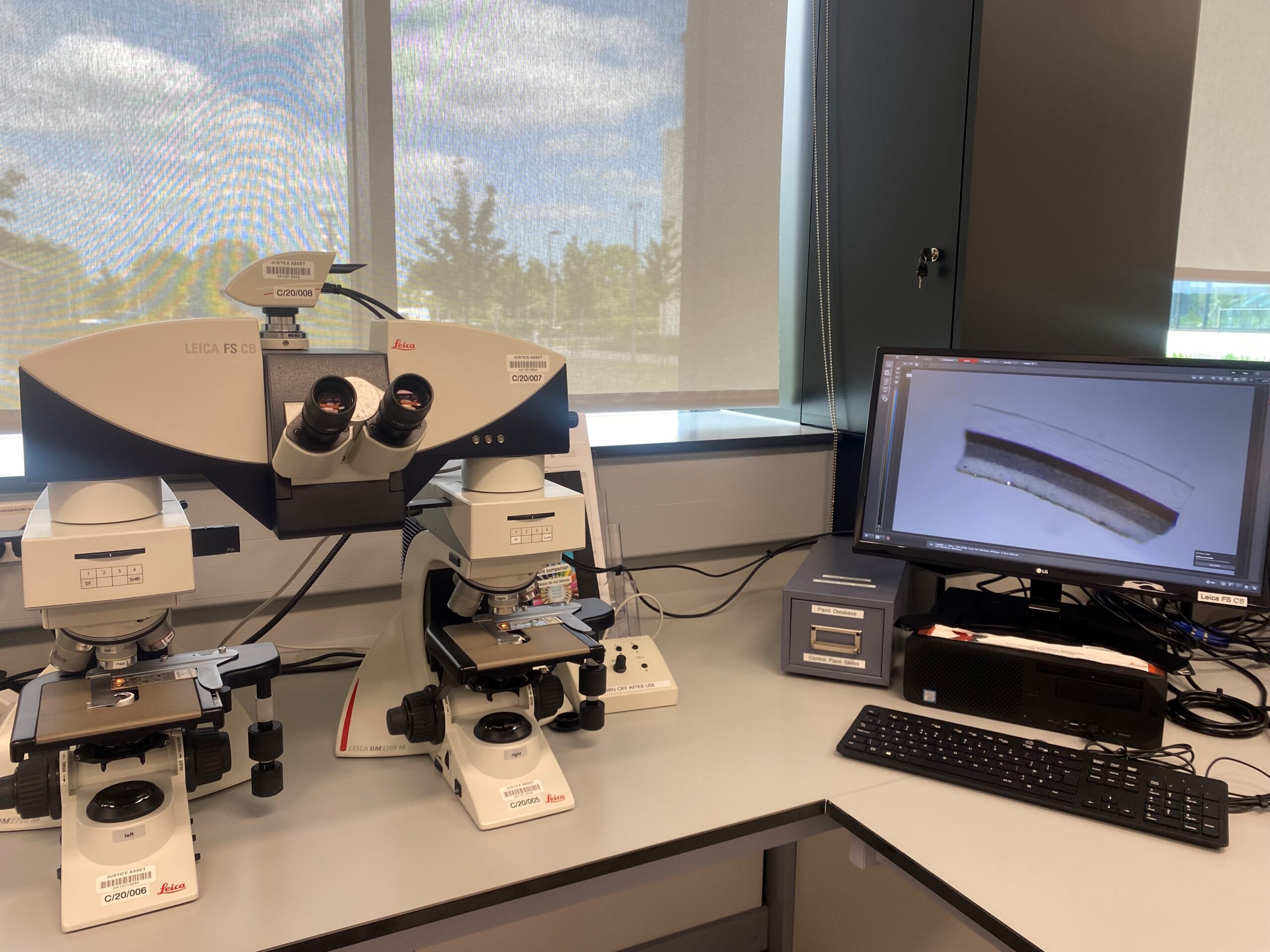Fig.1
Paint Analysis


Fig.2
Paint
Paint is a common material that can become important forensic evidence, especially in crimes involving vehicular accidents or property damage, it is essentially a coloured liquid coating that dries to form a thin, solid film on surfaces. Often, objects have multiple layers of paint (for example, a base primer, one or more colour coats, and a clear protective coat on automobiles). Paint is used for both protective and decorative purposes on items like cars, buildings, and various goods. It has several characteristics – technical (chemical composition, durability), aesthetic (colour, gloss), and economic (cost, application method). In forensic science, these attributes are considered when analysing paint samples, because they can help identify the paint’s source.
Paint evidence can be used for exclusion purposes. If the paint from a scene does not match a suspected source, investigators know to look elsewhere. Additionally, forensic laboratories maintain collections of paint samples in databases which can sometimes be used to determine the make and model of a car from a paint chip even before a specific suspect vehicle is identified.
Paint evidence typically comes in the form of chips or smears. For instance, in a hit-and-run car accident, tiny paint chips from the vehicle may be left on the victim’s clothing or on objects at the scene. Conversely, the vehicle might have fibres or other traces from what it hit, embedded in the damaged paint. Even in burglaries, a tool used to pry open a painted door or window can leave paint smears on the tool. In cases where paint is one of the only pieces of evidence, it can provide useful investigative leads. The colour and composition of a paint sample can sometimes be used to identify a make or model of a car, or link a tool or object to a particular painted surface. For example, a specific shade of auto paint and the layering structure might match only a certain range of vehicle years and models, narrowing down a suspect vehicle.
After the visual comparison, a sample is observed under microscope to assess the layer structure of the paint, this is usually followed by chemical analysis. A small sample of the paint (often a cross-section through all layers) may be analysed by techniques such as Fourier Transform Infrared (FT-IR) spectroscopy. FT-IR can identify the chemical composition of each layer (for instance, the type of polymer binder, such as acrylic, alkyd, or polyurethane, and sometimes certain pigments or additives). Each type of paint and even different batches can have unique infrared spectra, providing a “fingerprint” for comparison. It is crucial that a control sample of paint from the suspected source is collected for comparison – for example, paint from the hit-and-run suspect’s car or paint from the window frame that was broken. Only by directly comparing the evidence sample to a known sample can a probable link be made.
